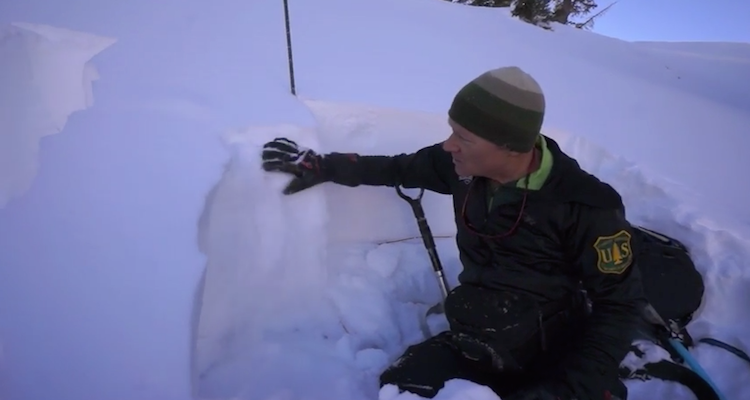Go Behind the Scenes of an Avalanche

'image: Utah Avalanche Center / YouTube'
Earlier this month, a skier triggered an avy on Peak 10,420 in the Wasatch backcountry (near Guardsmans Pass, between Solitude and Brighton in Big Cottonwood Canyon) and, thankfully, lived. The boys at the Utah Avalanche Center studied the aftermath of the slide in this neat little video, and now the rest of us can learn about snow safety from our cozy offices. Check it out:
First off, this slope is north-facing—typically not safe this early in the season. Second, it can creep up to 45 degrees—also not super safe. This isn’t to say these mountains are un-skiable in January, but they’re definitely riskier. From the snow pit, you’ll see the top layer is the newer snow from a days-old storm that’s faceted at this point. Below that layer is a thick, persistent slab. Then, below that, “we have our old friend, the faceted snow—it’s nothing but loose, sugary snow.” In other words, a perfect recipe for a slab avalanche.
Bottom line: Strong on top of weak is bad. Very bad. Stay safe out there!
Also, if you’re reading this, you probably have a vested interest in backcountry skiing and snow safety, so check out the 2014 Fall/Winter Gear Guide, where we give you the low-down on our favorite radios, probe, shovel, snow saw, and beacon.